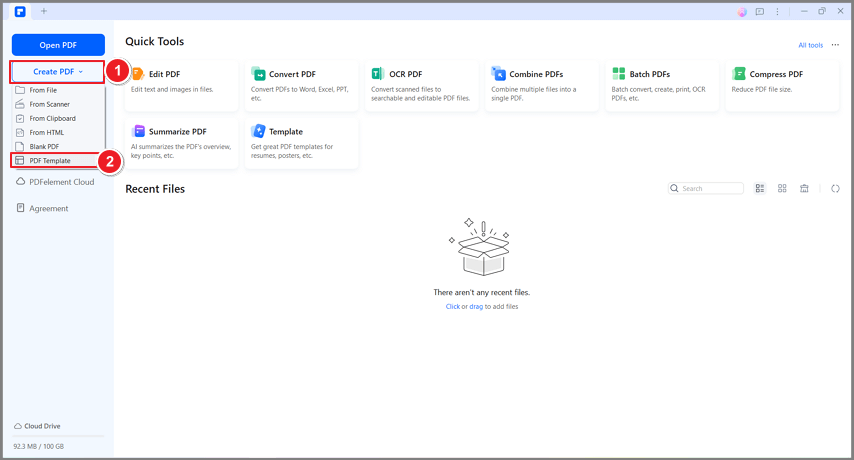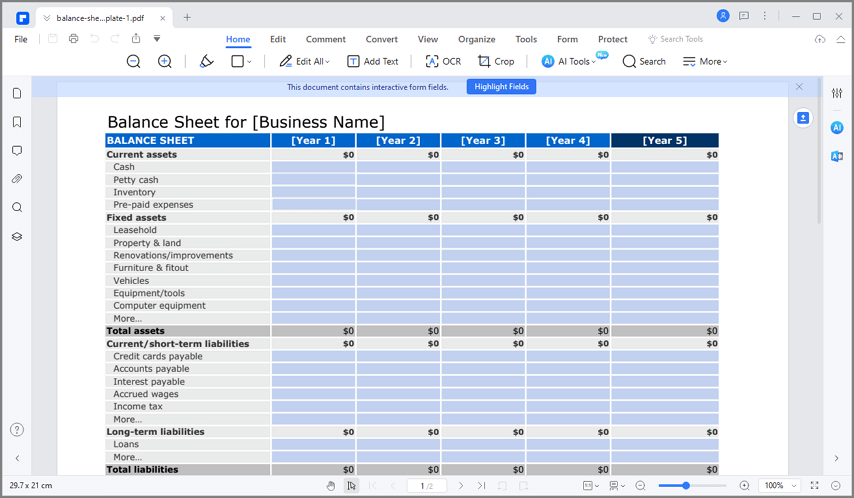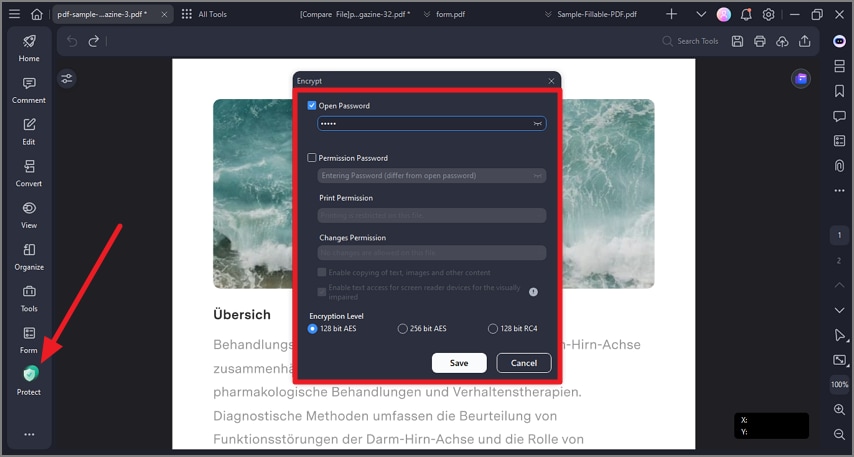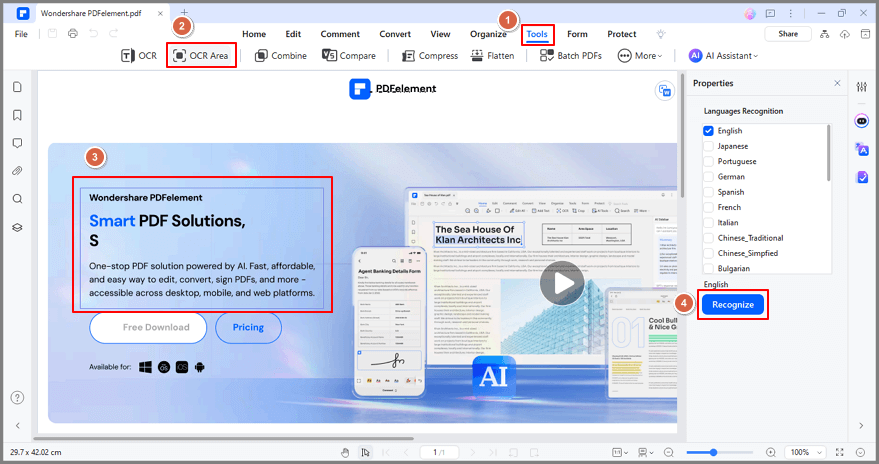In procurement, RFQs ask for quotations. RFPs ask for proposals. They play a key role in getting bids and proposals from vendors. Imagine you're a business looking to buy new software or hire a contractor for a major project. How do you decide whether to request a quote or a detailed proposal? Understanding these tools is key. They help you make informed decisions and get the best outcomes.
This article defines RFQs and RFPs, explains their differences, and discusses their importance in procurement. We also highlight Wondershare PDFelement, a tool to simplify making and managing RFQs and RFPs, improving efficiency and accuracy in procurement.
In this article
What is an RFQ?
An RFQ, or Request for Quotation, is a formal document. It is used in procurement to ask for bids from suppliers. They are for specific products or services. Its main purpose is to get detailed pricing and terms from vendors. This is for items that are well-defined and specified. An RFQ typically includes the following components:
- Product Descriptions: Detailed information about the items or services required, including specifications, features, and technical requirements.
- Quantities: The exact number of units or volume of services needed to ensure suppliers can provide accurate pricing.
- Delivery Requirements: Information on when and where the products or services should be delivered, including any specific logistics or timing constraints.
- Terms of Payment: The conditions under which payment will be made, such as payment schedules, accepted payment methods, and any early payment discounts or penalties for late delivery.
It is commonly used when the purchasing organization precisely understands its needs and seeks competitive pricing to ensure cost-effective procurement.
What is an RFP?
An RFP is a formal document used in procurement. It solicits detailed proposals from vendors for complex projects or services. Its main purpose is to gather full solutions. These include methods, timelines, and cost estimates. They are for complex needs that can't be easily defined. An RFP typically includes the following key sections:
- Project Objectives: Clear articulation of the goals and desired outcomes of the project.
- Scope of Work: This is a detailed description. It covers the tasks, deliverables, and responsibilities the vendor must do.
- Evaluation Criteria: Evaluation Criteria are specific factors and metrics. They will be used to assess the proposals. They include things like technical expertise, cost, and past performance.
- Proposal Submission Guidelines: Instructions for format, deadlines, and other submission requirements.
This process lets the buyer evaluate different approaches. They can then choose the best solution based on skill, cost, and the vendor's ability to meet needs.
Difference between RFQ and RFP
Below is a comparison of RFQs and RFPs. It highlights their key scope and goals and gives examples of usage. This comparison aims to clarify when to use each method well in procurement.
| Aspect | RFQ (Request for Quotation) | RFP (Request for Proposal) |
| Scope and Complexity | Typically used for straightforward purchases with clear specifications. | Used for complex projects requiring detailed solutions and creative approaches. |
| Intended Outcomes | Obtaining the best price for a specified product or service. | Identifying the best overall solution for a complex problem or project. |
| Appropriate Usage | When requirements are clear, the primary goal is cost efficiency. | For complex projects where a tailored solution and expertise are essential. |
| Examples | Procuring raw materials, office supplies, or standardized services. | Implementing software systems, construction projects, or consulting services. |
Aspect RFQ (Request for Quotation) RFP (Request for Proposal) Scope and Complexity Typically used for straightforward purchases with clear specifications. Used for complex projects requiring detailed solutions and creative approaches. Intended Outcomes Obtaining the best price for a specified product or service. Identifying the best overall solution for a complex problem or project. Appropriate Usage When requirements are clear, the primary goal is cost efficiency. For complex projects where a tailored solution and expertise are essential. Examples Procuring raw materials, office supplies, or standardized services. Implementing software systems, construction projects, or consulting services.
Importance of RFQ and RFP
RFQs are crucial in procurement. They and RFPs offer many benefits. These benefits help in vendor selection, cost savings, and risk reduction.
RFQ (Requests for Quotation)
- Cost Saving: RFQs create cost savings. They let organizations get competitive prices from many suppliers for standardized products or services. By asking for bids based on set requirements, businesses can compare prices and negotiate good terms, which leads to cost savings.
- Vendor Selection: RFQs streamline vendor selection. They focus on pricing and basic specs. Organizations can evaluate vendors based on their responsiveness. They look at their reliability and ability to meet deadlines.
- Risk Mitigation: RFQs mitigate risks. These risks come from price swings and supply chain disruptions. RFQs do this by getting good prices and by working with many suppliers. This diversification reduces reliance on one vendor. It also helps with resilience to market shifts.
- Competitive Bidding: RFQs foster competitive bidding. They invite many vendors to submit quotes for products or services. This competition incentivizes vendors to offer low prices. They must also offer extra services to win contracts
RFP (Requests for Proposal)
- Cost Savings: RFPs allow organizations to explore many pricing models. These include fixed-price, time-and-materials, and cost-plus deals. Vendors provide cost estimates in their proposals. The estimates help compare costs and ensure fair prices.
- Vendor Selection: RFPs enable organizations to assess vendors well. They look at factors beyond price. They consider technical skills, project management, and past work. This full review ensures the selection of vendors. They are best suited to meet project needs.
- Risk Mitigation: RFPs help mitigate risks. They do this by asking for detailed proposals that address challenges and risks. Vendors propose risk plans. They also propose backup plans and performance guarantees. These are to ensure project success.
When to Use RFQ
RFQs are ideal for situations where:
- Straightforward Procurement: Use RFQs to acquire goods or services with well-defined specifications.
- Cost and Time Efficiency: RFQs streamline buying when cost and delivery time are key. They focus on price and basic specs.
- Standardized Items: RFQs are great for getting competitive prices. They work well for standardized items like office supplies, raw materials, or equipment.
- Quick Decision Making: RFQs enable quick decision-making. They do it by getting bids from many suppliers and enabling price comparisons. This makes them good for routine purchases.
| Name | System | Price | Multi-platform supported |
| PowerDirector 365 | Windows/Mac | $150/Year | |
| Filmora | Windows/Mac | $150/Year | |
| Premiere Pro | Windows | $150/Year | |
| VideoPix | Mac | $150/Year | |
| Game Your Video | Windows/Mac | $150/Year |
How can Wondershare PDFelement facilitate the writing of RFQ and RFP?
Wondershare PDFelement - PDF Editor Wondershare PDFelement Wondershare PDFelement have many features. It can simplify making and managing RFQs (Requests for Quotation) and RFPs (Requests for Proposals), making procurement processes more efficient and professional.
Template Creation and Editing
PDFelement lets you create and edit templates. It has easy editing tools and lets users easily create and change templates for RFQs and RFPs. Users can design templates for their organization's branding and needs. This feature ensures consistency across documents and saves time by removing the need to recreate templates for each procurement project.

Form Field Recognition and Automation
PDFelement has advanced form field recognition. It automates adding interactive form fields to RFQ and RFP templates. Users can easily add text fields, checkboxes, and dropdown menus. These change static documents into dynamic forms. This automates data entry for vendors. It also simplifies response collection. It improves accuracy and efficiency in procurement.

Collaboration and Review Tools
PDFelement helps with collaboration and review by providing annotation and markup tools. Users can add comments, annotations, and stamps to RFQs and RFPs, enabling easy communication and feedback among team members. This feature promotes collaboration, speeds up document reviews, and ensures that all stakeholders can provide input before finalizing procurement documents.
Secure Document Handling
PDFelement offers robust security features to safeguard sensitive procurement information. Users can password-protect RFQs and RFPs, apply digital signatures, and redact data to keep it private. This prevents unauthorized access and ensures compliance with privacy laws. PDFelement prioritizes document security. It gives vendors confidence and builds trust in procurement.

OCR (Optical Character Recognition) Technology
Converts scanned RFQ and RFP documents into editable and searchable text. This enhances document usability and accessibility. Users can easily extract text from scanned documents, make edits, and search for specific information. This eliminates the need for manual data entry and improves document comprehension.

Conclusion
In conclusion, PDFelement offers full solutions for making, working on, and managing RFQs and RFPs. Its easy-to-use interface, strong features, and customizable templates empower users. They use them to simplify buying. They also use them to boost efficiency. And to ensure professionalism in making documents. You can use it to get good prices with RFQs. You can also use it to evaluate detailed proposals with RFPs. PDFelement is the best tool for improving procurement workflows and achieving success.

 G2 Rating: 4.5/5 |
G2 Rating: 4.5/5 |  100% Secure
100% Secure



